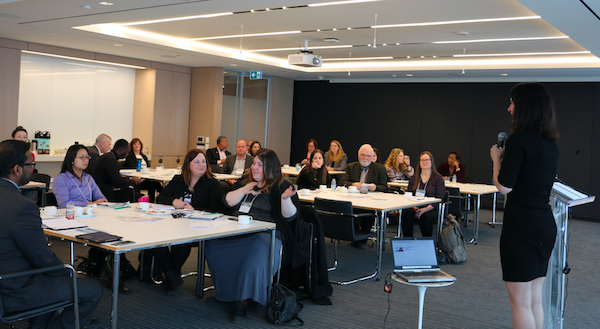The rapid advances in digital technology, demographic and societal shift even environmental changes are all pushing government agencies towards altering their traditional norms and systems – it’s something government organizations have to undergo in order to adapt to an evolving ecosystem.
“The role of government has shifted from that of a solution provider to that of a network integrator,” said Suzanne Kiani Knight, a senior manager at professional auditing and consulting firm Deloitte Canada. “Governments can’t do it all. Today, more and more people are relying on government organizations to connect them with the products and services they need.”

Knight was one of the presenters at the recent CGE Leadership Series forum in Toronto which focused on Talent Mobilization and how organizations can move beyond their traditional workforce structures to meet emerging challenges.
Related content
Modern leadership: agile, adept and collaborative
Improving workforce management: The case of the Regional Municipality of Niagara
Moving to the Cloud: A strategic approach
Knight’s talk was titled Workplace of the Future: Taking an agile approach to the design and operations of government organization.
She based her presentation of the concept GovCloud published by Deloitte by 2012. GovCloud posits a cloud-based government workforce. Rather than existing in any single agency, its workers “reside in the cloud.”
“Cloud teams could be directed by thinner agencies than those that exist today,” according to Deloitte. “Agencies and cloud teams could be supported by government-wide shared services that prevent the establishment of new, permanent structures by assisting with ongoing, routine work.”
It’s a direct contrast to many existing government workforces which are based on 1950’s era frameworks that has largely remained unchanged – public sector structures that “tend to be reactive, creating new, permanent structures that look a lot like the old one.”
Knight also advocated an “agile approach to the design and operation” or government organizations.
Agile is viewed by many management experts as a movement which seeks to replace traditional management processes. The term, as it applies to project management was coined in 2001 by software developers who sought to discuss “lightweight” development methods. Using agile principles, developers evolve requirements and solutions through the collaborative effort of cross-functional teams. Its advocates use adoptive planning, evolutionary development, early delivery, continues improvement, and encourage rapid and flexible response to change.
Since many of the drivers of change in the public sector workforce are tied to technology, said Knight, “government organizations can no longer afford to be followers when it comes to technology adoption.”
She sees the cloud enabling employees to share ideas and collaborate easier, exchange expertise and eventually develop shared services for their organization as well as their customers.
“The government needs to take a more agile approach to address the speed of change,” she said.
She foresees the traditional top-down, monolithic public sector structure evolving into a more dispersed networked workforce which does not necessarily operate within the confines of given headquarters but rather operating in the GovCloud.
Knight identified three steps which organizations can take to get there.
Step 1 Build collaborative spaces
- Make inter-office collaboration easier
- Create physical spaces where employees can spend time sharing information across departments
- Provide employees with several hours a week to devote to collaborative efforts
Step 2 Rotate your people
- Create a rotational program which allows people to work across departments
- Establish secondment opportunities between non-profit, the public and private sector
- Use expertise from other departments such as accounting, IT and finance to take the first step towards shared services
Step 3 Star a volunteer cloud
- Plant the seed for the cloud by allowing workers to seek out tasks beyond their responsibilities
- Provide a platform for managers to post issues
- Allow employees to help with projects that interest them
Finally, Knight said that leaders and managers should learn to embrace change.
“Don’t fear, this will pay dividends through an expanded network, acquiring of new skills, and enhanced engagement due to the ability worker get to pursue their passions,” she said.

